Undeniable Evidence in Brief
As there’s a long history of debate among scientists about this subject, I would like to present some scientific facts that provide a clear evidence about this version of demon

. The facts are well known in the fields of Biology, Chemistry and Physics as following:
Osmosis: two types of fluids can be separated by a semipermeable membrane like cellophane, frog’s skin, sheep bladder or fish bladder. The separated fluids can have different vapour pressures.
Vapour Pressure and Raoult's Law: the vapour pressure of different liquids are different based on the solute molecules concentration at the same temperature.
Pressure Gradient: Pressure gradient including vapour pressure gradient is a known source of energy.
If we have a closed system of two fluids with different vapour pressure separated by a semipermeable membrane there will be a vapour pressure gradient as a source of limitless clean energy. For example if two closed chambers are connected by a semipermeable membrane like cellophane in the lower part of the chambers, one of them contain water the other contain albumin solution, there will be a vapour pressure gradient in the upper part of each closed chambers. This pressure gradient is a source of energy which uses molecular kinesis instead of external energy inputs like fuels, solar, nuclear, wind, wave, water evaporation, gravitational potential, thermal gradient or salinity gradient energies.
If there is a small opening between chambers in their upper part a novel cycle will establish between them as shown below:

When the valve is closed, osmotic pressure will be equal to hydrostatic pressure and evaporation will be equal to condensation in both sides while the vapour pressure of side1 will be higher than the vapour pressure of side2 as explained by Raoult’s law.
But if the valve is opened water vapour moves from side1 to side2, condensation in side2 increases, hydrostatic pressure increases, water diffuses from side2 to side1, evaporation increases in side2 to compensate for decreased vapour pressure.
This simple conclusion is only achieved after trials and errors over the period of many years.
Extended Gibbs Donnan Equilibrium
Separation of two ionic solutions with a permselective membrane that is impermeable to some of the ions leads to an uneven distribution of permeating ions on the two sides of the membrane described by the Gibbs–Donnan (G–D) equilibrium with the G–D factors relating ion concentrations in the two solutions (Waniewski, 2021).
Uneven distribution of ions between the two sides can include ions like Proton (H+) or hydroxide (OH-) . And we know from basics of chemistry that the pressure of some gases is directly proportional to the ion concentration involved in their reversible reactions thus uneven gas pressure can be established between the two sides.
Involvement of gases in this equilibrium can be described as a novel extension that can generate clean limitless energy through another novel cycle. Carbon dioxide and ammonia are among the well-known gases that reversibly react with water and their gas pressure is directly proportional to the concentration of hydrogen ion (H+) or pH of the solutions.
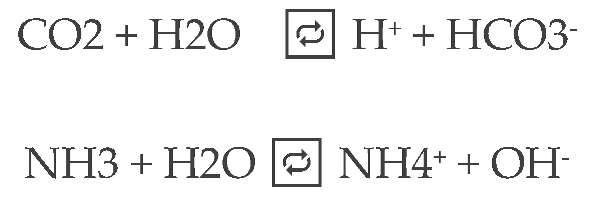
Experimental Evidence
We performed an experiment to examine the idea of using Extended Gibbs Donnan Equilibrium to create gas pressure gradient, just like ion gradient, using a gas that can easily react with water like carbon dioxide.
We used the following materials:
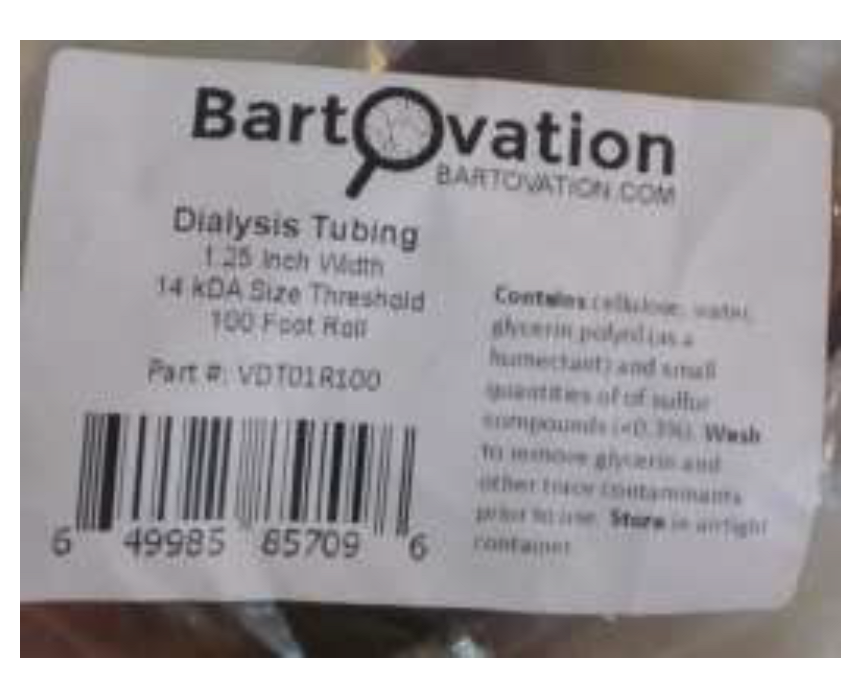
Tubes with valves: for leak free connection of gases and liquids.
Egg white Albumin: as a source of albumin and carbonic anhydrase enzyme.
Carbon Dioxide: we produced CO2 from reaction of citric acid with sodium bicarbonate (baking soda) solution.
Gas hose with tea as colouring agent : we used U shaped hose filled with tea simplest sensitive manometer in our experiment.
The following is the picture of the device with illustration diagram:
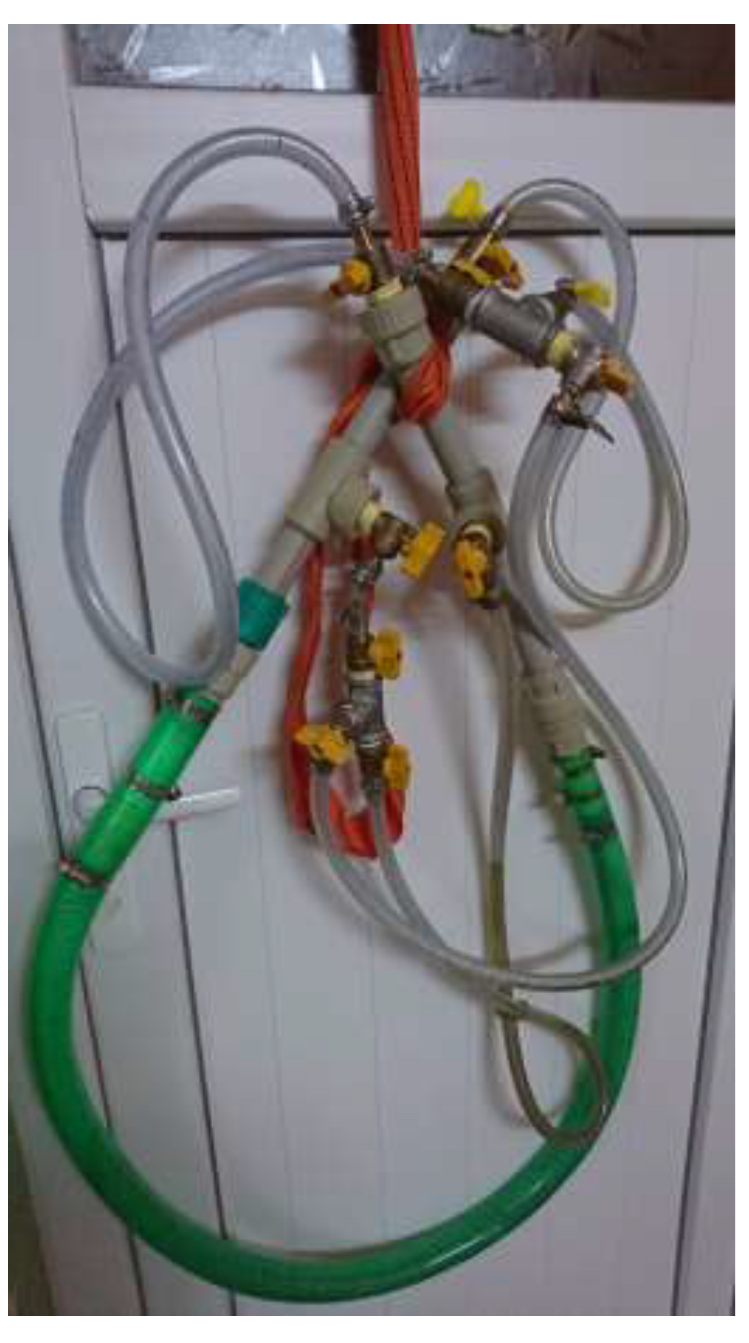
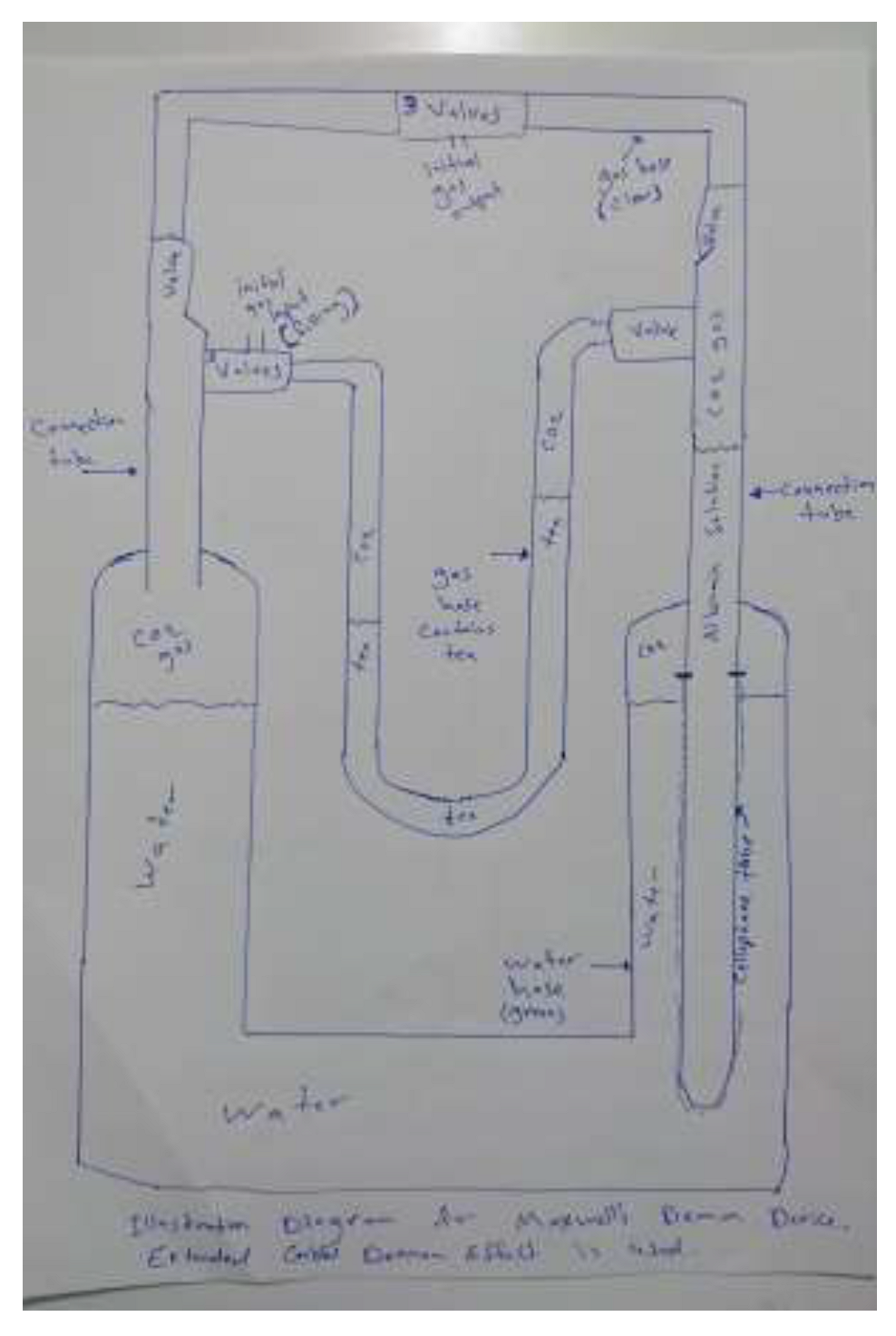
Over the period of more than three months the above device provided continuous pressure gradient in the altitude of few centimetres of water column. This experiment can be repeated in school laboratories or by hobbyists.
Energy Booster
Energy from the gas pressure gradient can be boosted by using two oppositely charged impermeable molecules like acidic versus alkaline proteins with different isoelectric points (IP). Thus substantial energy can be extracted between the two chambers with equal osmotic pressure.
Maxwell’s Demon (Thought Experiment)
Maxwell's Demon is an imaginary creature that the mathematician James Clerk Maxwell created to apparently contradict the second law of thermodynamics (webhome.auburn.edu, n.d.).
Question: How much energy needed for CPU of the Demon?
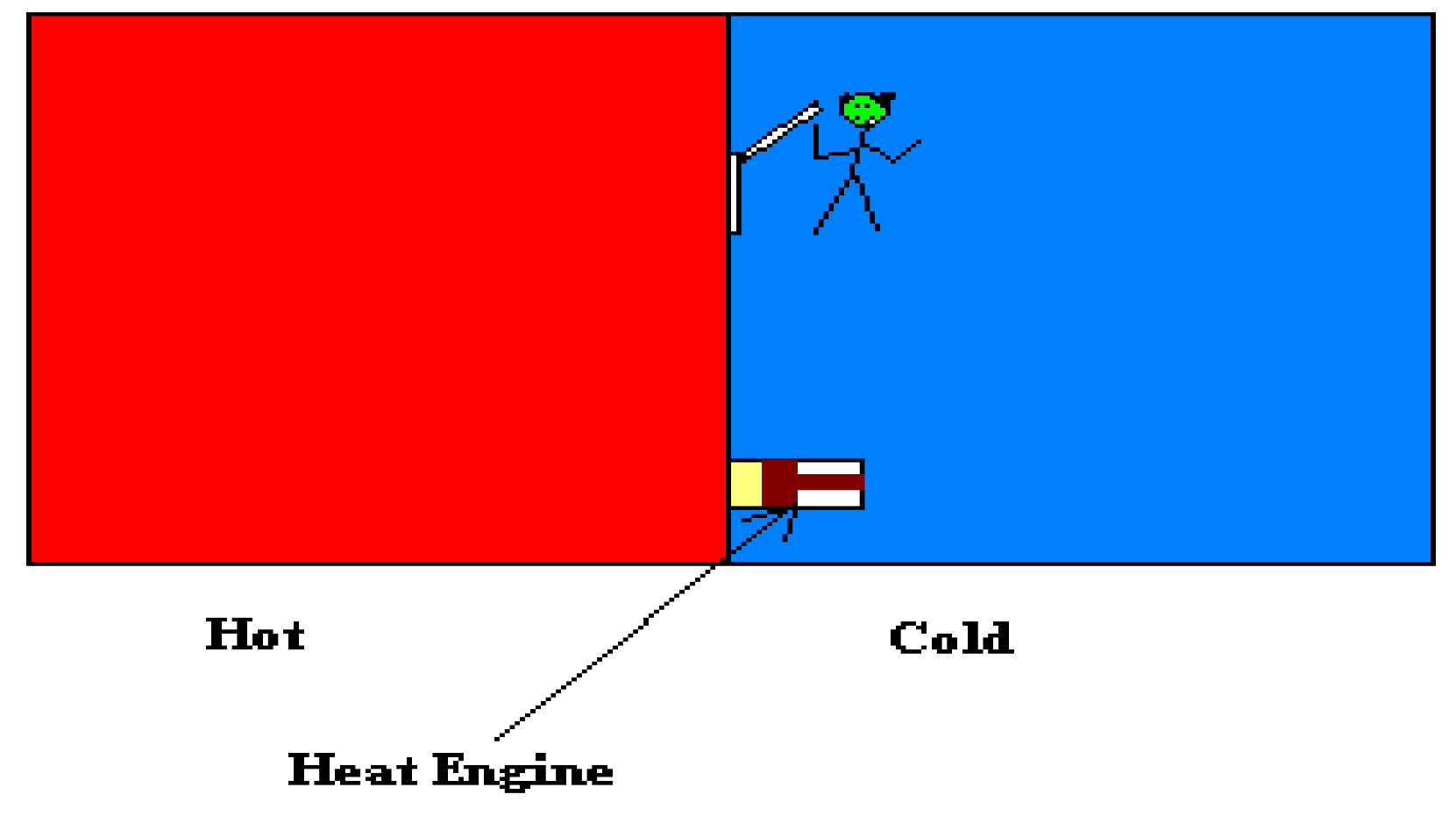
Three Versions of Maxwell’s Demon
For further illustration we can classify the demon into three categories:
Selective demon: as shown above, high and low energy particles are separated by the demon.
One way demon: this demon act like a valve only permits particles in one direction regardless of their energy state.
Selectively One way demon: as we presented in our experiments above, this type of demon allow some particles to move more in one direction than the opposite direction. In our example the water vapour moves into the solution more than out of it as described by Raoult’s Law and the cycle maintained by the semipermeable membrane .
Breaking The Second Law of Thermodynamics
Energy will not flow spontaneously from a low temperature object to a higher temperature object (Gsu.edu, 2019). It looks like our devices apparently break this law as it can transfer heat from cold site to hot side without external energy load. However it depends on its internal molecular kinetic energy.
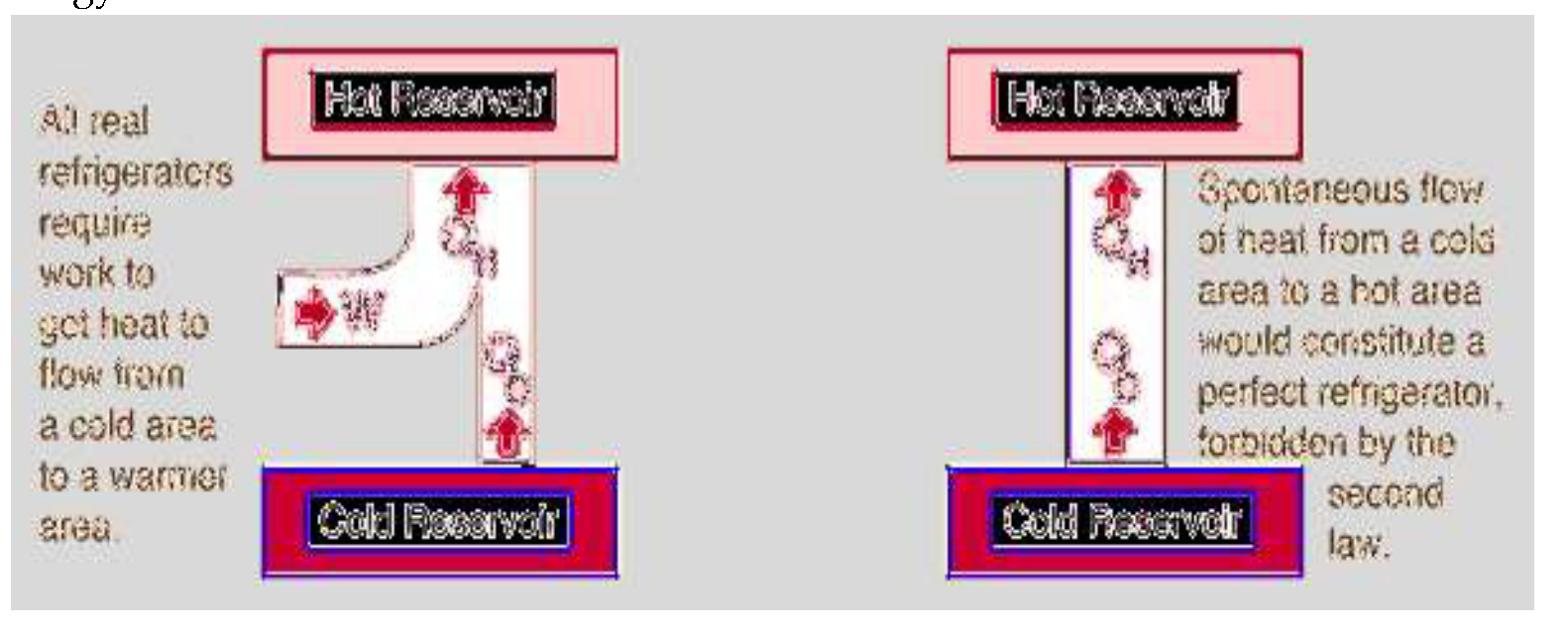
Recently I contacted the author of the novel research about energy extraction from graphene ripples from Arkansas University; They proved that such a device does not violate The Second Law of Thermodynamics.
Brownian Motion
Brownian motion is the random movement of particles in a fluid due to their collisions with other atoms or molecules. Brownian motion is also known as pedesis. It is named after the Scottish botanist Robert Brown, who observed pollen grains moving randomly in water. He described the motion in 1827 but was unable to explain it. The Roman poet Lucretius describes the motion of dust particles around the year 60 BC. At 1905 Albert Einstein published a paper that explained the pollen was being moved by the water molecules in the liquid. In 1908, Jean Perrin experimentally verified Einstein's hypothesis, which earned Perrin the 1926 Nobel Prize in Physics "for his work on the discontinuous structure of matter" (Helmenstine, 2019).
Personally, I tried to find a method for extracting energy from Brownian motion since I studied it at secondary school, twenty about twenty seven years ago.
Brownian Ratchet or Feynman’s Ratchet (Though Experiment)
It consists of a gear known as a ratchet that rotates freely in one direction but is prevented from rotating in the opposite direction by a pawl, appears to be an example of a Maxwell's demon, able to extract useful work from random fluctuations (heat) in a system at thermal equilibrium in violation of the second law of thermodynamics. Detailed analysis by Feynman and others showed why it cannot actually do this (Wikipedia, 2022).
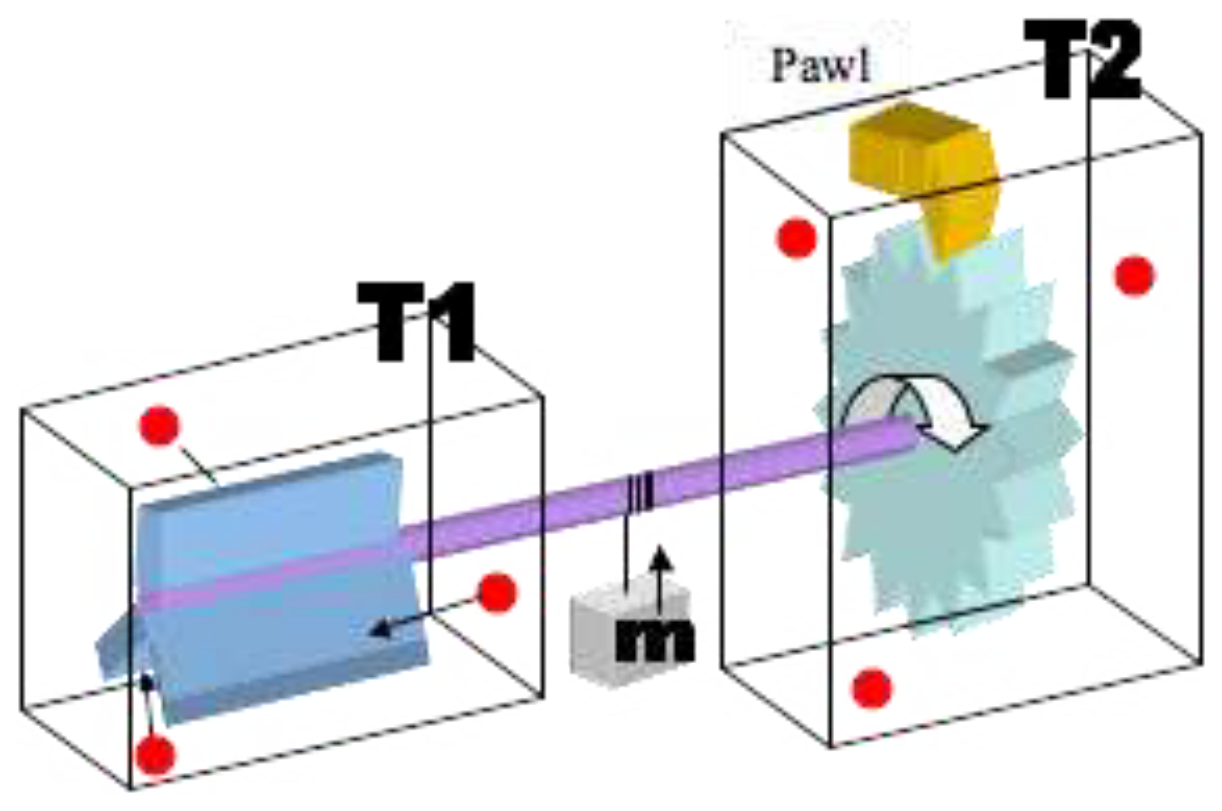
*Note: The macroscopic Brownian ratchet provided in this video proves that useful energy can be generated from random movements:
https://youtu.be/QU2CKQQ
Both Feynman and Maxwell noticed that there is such an important energy source but unfortunately all the scientists including themselves were unable to extract it. Even more they thought about its inextractability and impossibility rather than finding methods to overcome obstacles.
Ferrofluid Generator
When a container carrying a magnetized ferrofluid is subjected to external mechanical stimuli, the sloshing motion of the magnetized ferrofluid generates a time-varying magnetic flux, which can be used to induce an electromotive force in a coil placed adjacent to the container. This process generates an electric current in the coil, and therewith, can be used to transduce external vibrations into electric energy (Alazmi, 2016).
Other Possible Alternative Methods:
The following seven methods may be an alternative way to extract molecular kinetic energy for which further investigation and experimentation are required:
First Method : Microcoils / Nanocoils for Brownian Motion Energy Extraction
If a microcoil/nanocoil is placed inside a ferrofluid or a solution containing superparamagnetic particle with Brownian motion, magnetic dipoles’ motion inside or beside the coil will induce electromotive force. The electricity produced by this method is expected to be very low random AC current because of randomness of Brownian motion and small size coils.
Rectification Problem
An article is published at (Inderscience Publishers) under the title;
Brownian motion of magnetic nanoparticles as a source of energy?
Brownian motion of magnetic nanoparticles in a low–density gas can induce random voltage pulses in a microscopic electric circuit containing a high–number–of–turns coil.
It has been shown that in a nanogenerator where the motion of the magnetic nanoparticle is restricted to one–dimensional rotation around its vertical axis and the nanoparticle is inserted into a very low number–density gas (3 × 10 16 m -3) one can generate voltage pulses of the amplitude of 3 × 10 -8 V in one coil turn.
The total number of 10 6 turns is then necessary to reach the rectifying region (Poláček, 2013).
Triboelectric Nanogenerator (TENG)
It is an energy harvesting device that converts the external mechanical energy into electricity by a conjunction of triboelectric effect and electrostatic induction.
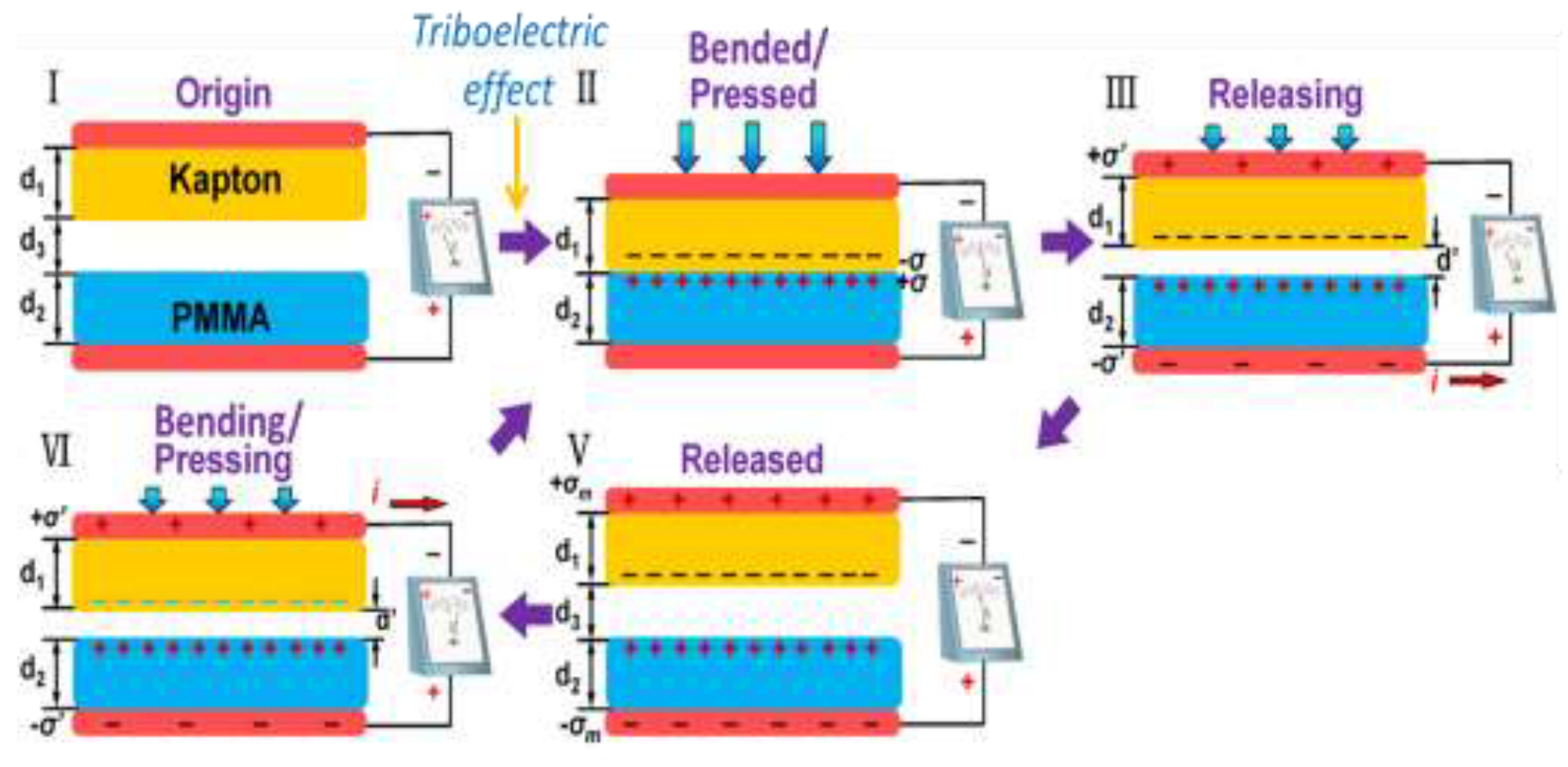
Vertical contact-separation mode TENG (Wikipedia Contributors, 2019)
PMMA: Poly (methyl methacrylate) also known as acrylic or acrylic glass
Lateral sliding mode TENG
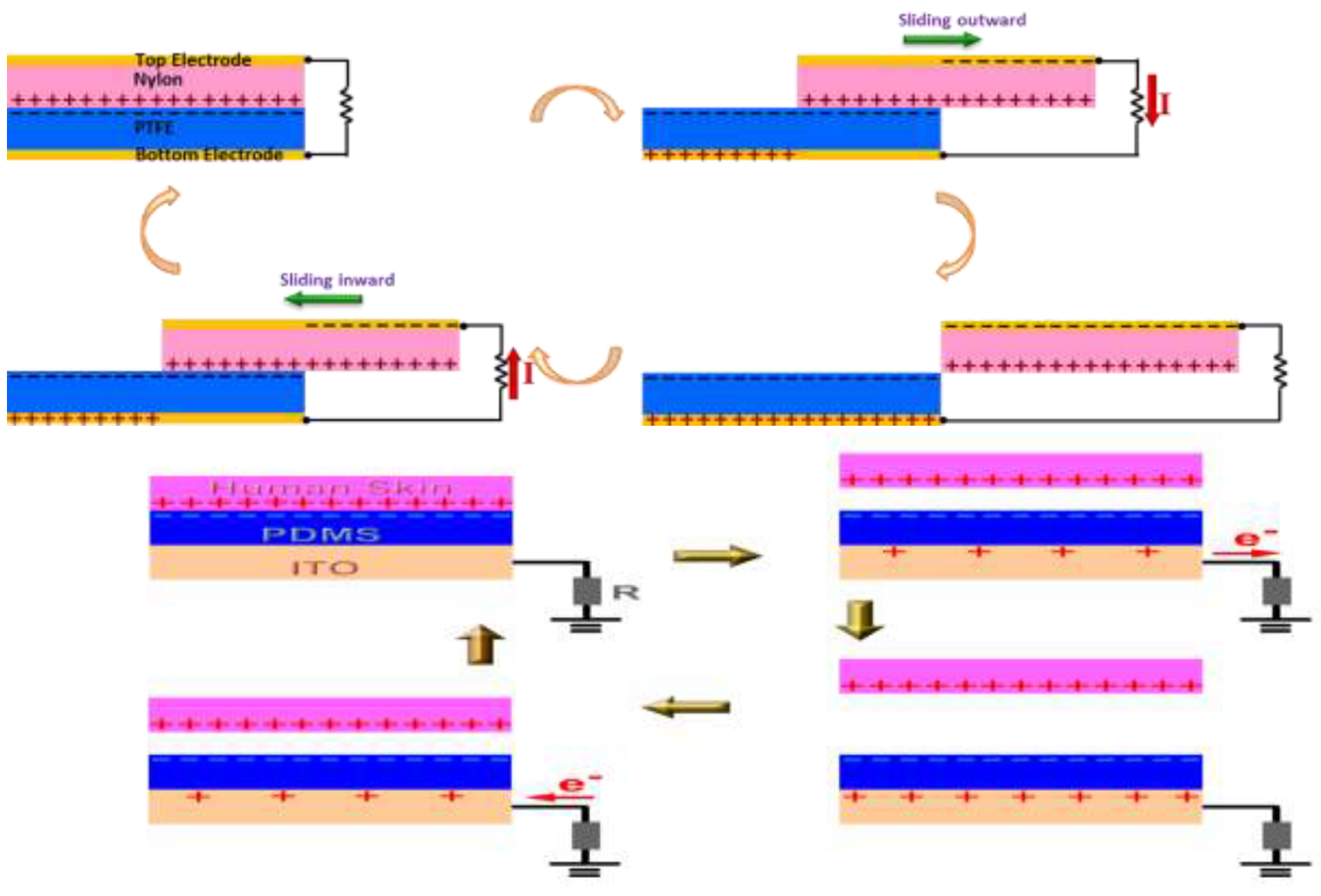
Single-electrode mode TENG (Wikipedia Contributors, 2019)
PTFE: Polytetrafluoroethylene (Teflon) PDMS: Polydimethylsiloxane (dimethicone) ITO: Indium tin oxide
Human skin (colored pink in the above diagram) is acting as free moving triboelectric component of this single electrode generator (Wang, 2013)
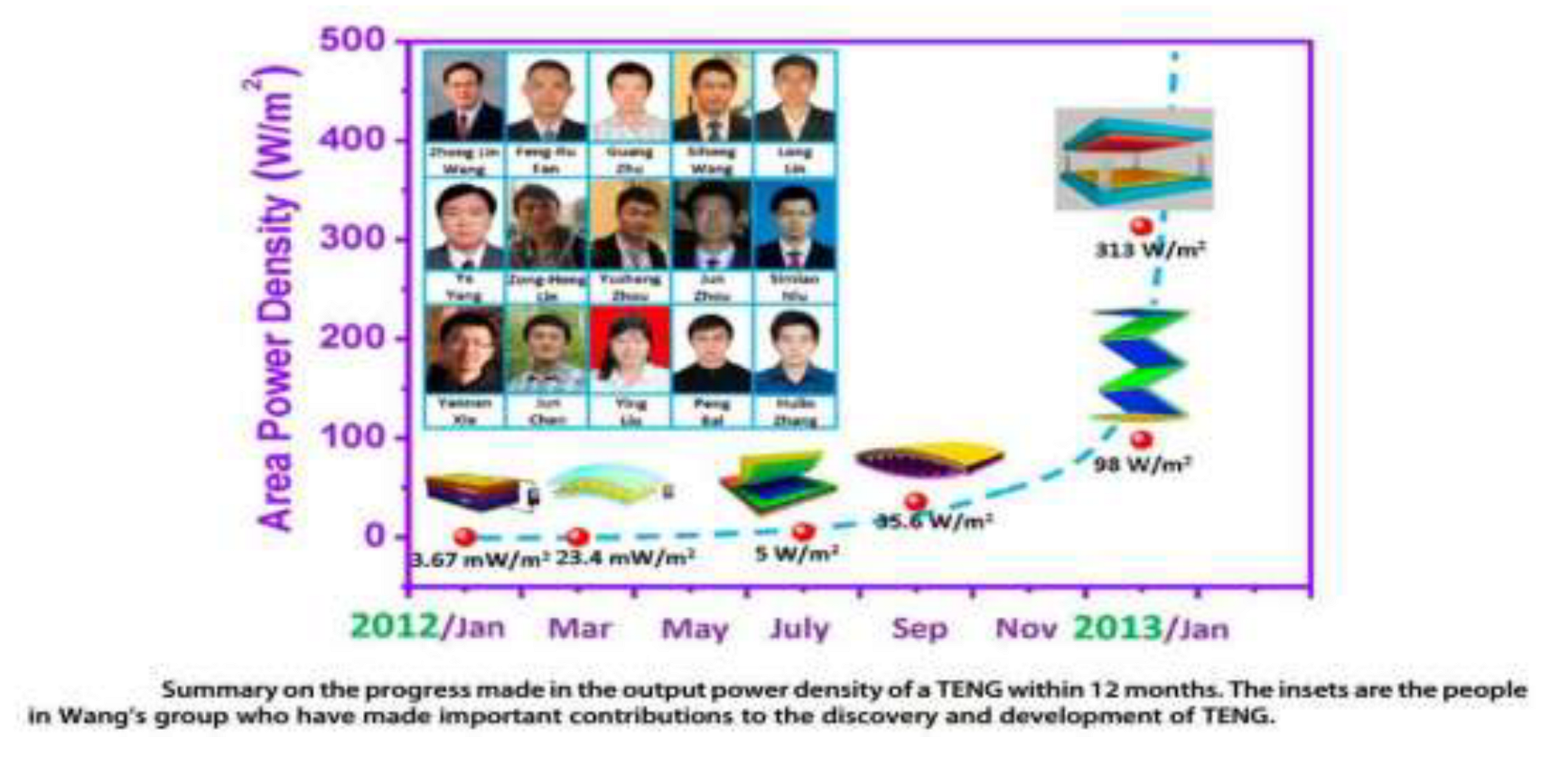
Second Method : Molecular Kinetic Based Triboelectric Nanogenerator
The motion of free triboelectric component of the single-electrode mode TENG can be changed from vibration-based motion in to molecular kinesis. (According to my proposed method), I mean, instead of using for example, human skin as triboelectric component, we can use nanoparticles or molecules inside fluids to induce current in the single electrode Triboelectric Nanogenerator.
There are two possible substitutes for free triboelectric component:
- Mixed gases with different triboelectric tendency or low pressurized gas
- Solution or suspension with different triboelectric components
*Concentration of the solutes/ nanoparticles or the pressure of the gas can be used as a factor to build relatively bigger stable electrodes.
Contact-separation Primary Cell Triboelectric Nanogenerator (CS-PC-TENG) can also be used for the same purpose (Fu, 2022).
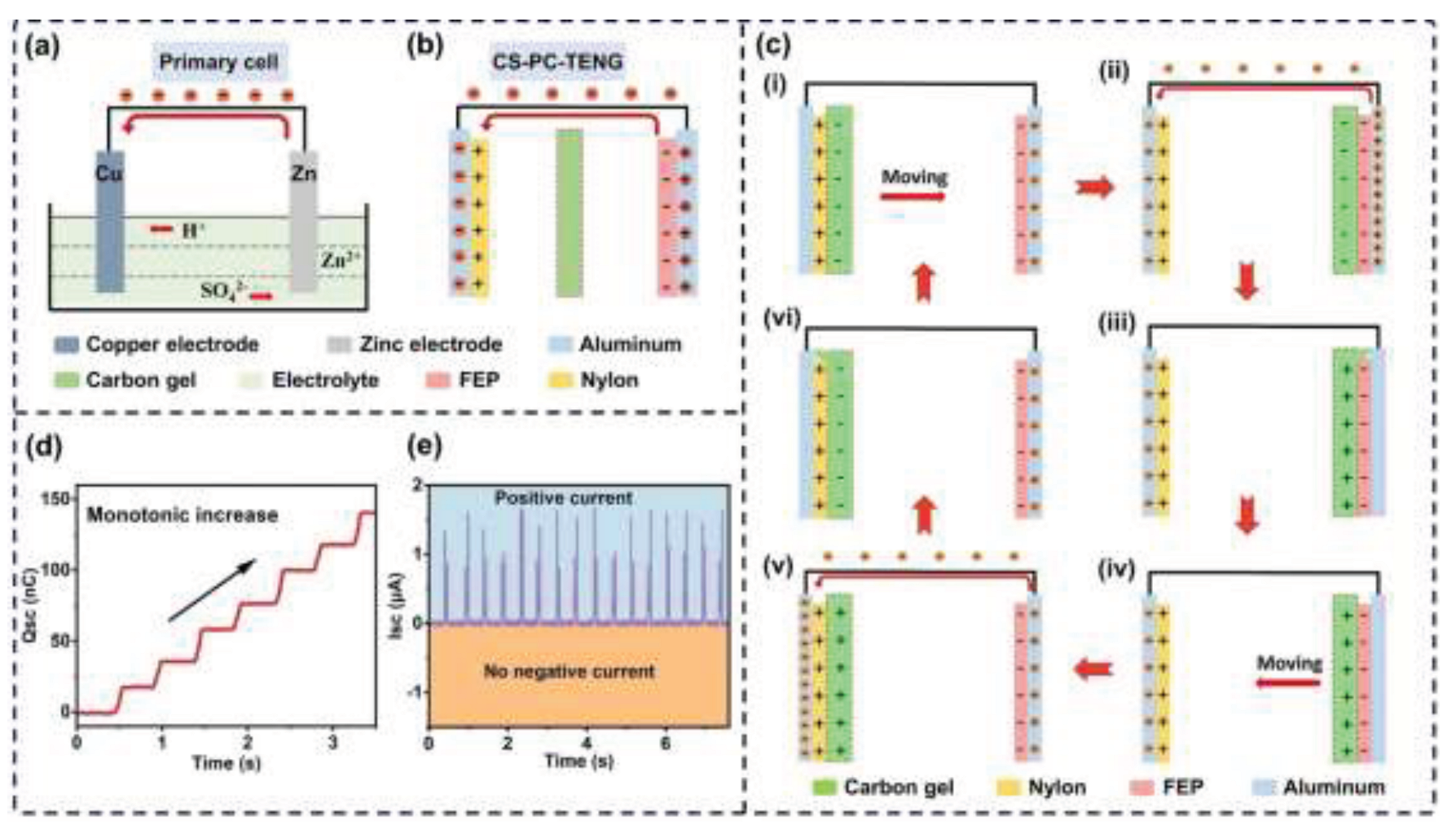
The structural comparison of primary cell and the CS-PC-TENG, and working mechanism of the CS-PC-TENG. a Basic structure of the Zn/Cu primary cell. b Basic structure of the CS-PC-TENG. c Schematic diagrams of the working principle of the CS-PC-TENG. d, e the basic output charge and current of the CS-PC-TENG. We propose using Brownian motion for moving carbon gel between two triboelectric components.
The Water Evaporative Energy
There are many methods for extracting energy from water evaporation at ambient temperatures. The most recent devices are these two novel generators:
- -
The evaporation-driven engines can power common tasks like locomotion and electricity generation. These engines start and run autonomously when placed at air–water interfaces. They generate rotary and piston-like linear motion using specially designed, biologically based artificial muscles responsive to moisture fluctuations (Chen, 2015).
- -
In new work, nanotechnology researchers have shown that evaporation from the surface of a variety of nanostructured carbon materials can be used to generate electricity: the evaporation driven water flow in nanoporous carbon film converts ambient thermal energy into electricity via the water molecules' interaction with the carbon material (
www.nanowerk.com, n.d.).
Third Method: The Water Evaporative Energy in A Vertical Closed System
In this method, we propose using one of the devices mentioned above that extract energy from water evaporation, in a vertically long closed container and putting the devices in the bottom, with the presence of a small pump to allow movement of water vapor only upward to act like a one-way valve. At the top there should be a condensing plate. when the water vapor moves upward against gravity, it loses some of its kinetic energy and it is condensed easier in the top of closed container. Thus, the system can gain thermal energy from the bottom by water evaporation process. The input of energy could be less than the output energy by the small pump. Thus, energy can be generated from surrounding ambient temperature.
Fourth Method: The Brownian motion of nanoresonator arrays
The nanoresonator double-array device has been proposed by some researchers by using arrays of piezoelectric nanopillars (Rattinacannou, 2014).
Fifth Method: Using Electrochemical Cell from Gibbs–Donnan Effect
As we mentioned above, separation of two ionic solutions with a permselective membrane that is impermeable to some of the ions leads to an uneven distribution of permeating ions on the two sides of the membrane described by the Gibbs–Donnan (G–D) equilibrium with the G–D factors relating ion concentrations in the two solutions (Waniewski, 2021).
We can use Gibbs-Donnan effect to produce H+ hydrogen ion gradient, then the hydrogen H+ ions can be used to produce current through an electrochemical cell. Thus the molecular kinesis is the source of this electrical energy.
Alternatively we can use series of different types of selectively permeable membranes with different Donnan potential to gain a net voltage from the different voltage sources. We can explain it as following:
Sixth Method: Mountain Thermal Energy Conversion (MTEC)
In comparison to Ocean Thermal Energy Conversion (OTEC), this device can obtain thermal gradient energy from high-low altitudes.
Seventh Method : Graphene Ripples
As presented by a team of researchers from Arkansas University by using the Natural Motion of 2D Materials to Create a New Source of Clean Energy (University of Arkansas News, n.d.).
Acknowledgments
I express my gratitude to: Dr. Abdulkarim Yasin Karim, Dean of College of Science / Salahaddin University; Dr. Sangar Salih Ahmed, Head of Department of Chemistry at College of Science / Salahaddin University.
References
- Alazmi, S.; Xu, Y.; Daqaq, M.F. Harvesting energy from the sloshing motion of ferrofluids in an externally excited container: Analytical modeling and experimental validation. Phys. Fluids 2016, 28, 077101. [Google Scholar] [CrossRef]
- CChen, X.; Goodnight, D.; Gao, Z.; Cavusoglu, A.H.; Sabharwal, N.; DeLay, M.; Driks, A.; Sahin, O. Scaling up nanoscale water-driven energy conversion into evaporation-driven engines and generators. Nat. Commun. 2015, 6, 7346. [Google Scholar] [CrossRef] [PubMed]
- Fu, S.; He, W.; Wu, H.; Shan, C.; Du, Y.; Li, G.; Wang, P.; Guo, H.; Chen, J.; Hu, C. High Output Performance and Ultra-Durable DC Output for Triboelectric Nanogenerator Inspired by Primary Cell. Nano-Micro Lett. 2022, 14, 1–11. [Google Scholar] [CrossRef] [PubMed]
- Gsu.edu, 2019. Second Law of Thermodynamics. [Online] Available at: http://hyperphysics.phy-astr.gsu.edu/hbase/thermo/seclaw.html[Accessed 1 Apr 2023].
- Helmenstine, A. M., 2019. An Introduction to Brownian Motion. [Online] Available at: https://www.thoughtco.com/brownian-motion-definition-and-explanation-4134272[Accessed 7 Feb 2023].
- Poláček, J.; Alexa, P. Brownian motion of magnetic nanoparticles as a source of energy? Int. J. Nanotechnol. 2013, 10, 1109. [Google Scholar] [CrossRef]
- Rattinacannou, J.-S. , 2014. A promising new energy source: The Brownian motion of nanoresonator arrays. EPJ Web of Conferences,.
- University of Arkansas News, n.d. Using the Natural Motion of 2D Materials to Create a New Source of Clean Energy. [Online] Available at: https://news.uark.edu/articles/40324/using-the-natural-motion-of-2d-materials-to-create-a-new-source-of-clean-energy[Accessed 2 Apr 2023].
- WWang, Z.L. Triboelectric Nanogenerators as New Energy Technology for Self-Powered Systems and as Active Mechanical and Chemical Sensors. ACS Nano 2013, 7, 9533–9557. [Google Scholar] [CrossRef] [PubMed]
- Waniewski, J.; Pietribiasi, M.; Pstras, L. Calculation of the Gibbs–Donnan factors for multi-ion solutions with non-permeating charge on both sides of a permselective membrane. Sci. Rep. 2021, 11, 22150. [Google Scholar] [CrossRef] [PubMed]
- webhome.auburn.edu, n.d. Maxwell’s Demon. [Online] Available at: https://webhome.auburn.edu/~smith01/notes/maxdem.htm[Accessed 21 Mar 2023].
- Wikipedia Contributors, 2019. Nanogenerator. [Online] Available at: https://en.wikipedia.org/wiki/Nanogenerator[Accessed 15 Feb 2023].
- Wikipedia, 2022. Brownian ratchet. [Online] Available at: https://en.wikipedia.org/wiki/Brownian_ratchet.
- www.nanowerk.com, n.d. A nanotechnology approach to generating electricity from water evaporation. [Online] Available at: https://www.nanowerk.com/spotlight/spotid=45918.php[Accessed 8 Mar 2023].
|
Disclaimer/Publisher’s Note: The statements, opinions and data contained in all publications are solely those of the individual author(s) and contributor(s) and not of MDPI and/or the editor(s). MDPI and/or the editor(s) disclaim responsibility for any injury to people or property resulting from any ideas, methods, instructions or products referred to in the content. |
© 2024 by the authors. Licensee MDPI, Basel, Switzerland. This article is an open access article distributed under the terms and conditions of the Creative Commons Attribution (CC BY) license (http://creativecommons.org/licenses/by/4.0/).
 . The facts are well known in the fields of Biology, Chemistry and Physics as following:
. The facts are well known in the fields of Biology, Chemistry and Physics as following:















